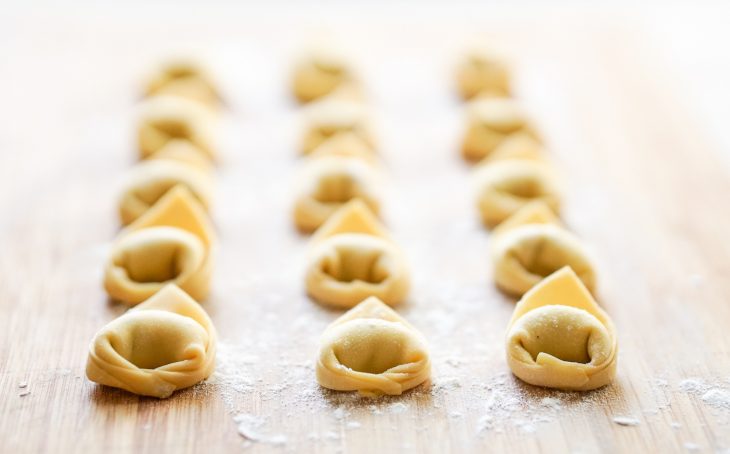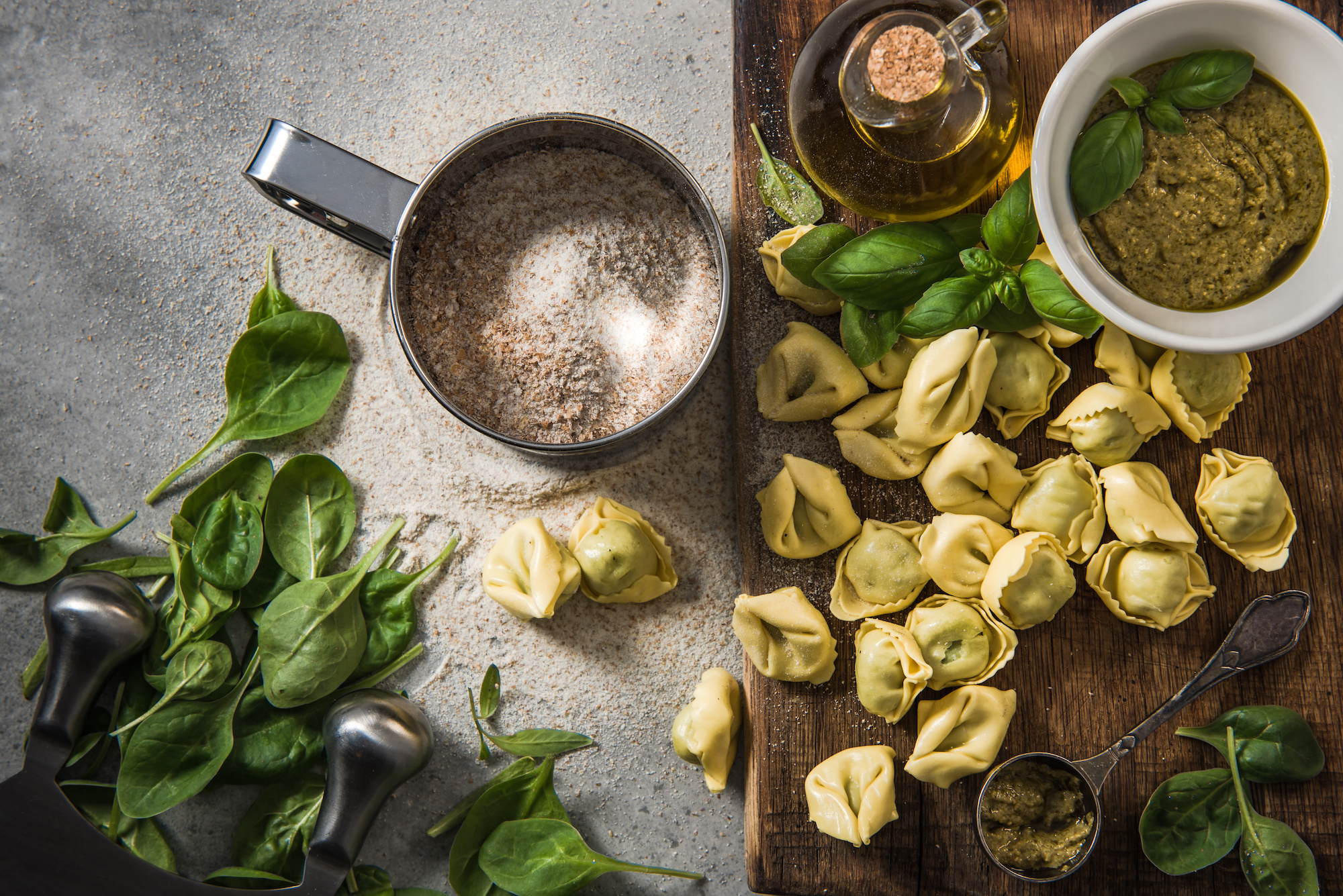
Tortellini is a classic Italian pasta known for its delicious taste and unique shape. These small, ring-shaped pasta dumplings are often filled with a variety of flavorful ingredients, such as cheese, meat, or vegetables. In addition to their culinary appeal, tortellini also offers several nutritional benefits. In this article, we will explore 20 fascinating tortellini nutrition facts that highlight its healthful qualities.
A Good Source of Protein
Tortellini contains a moderate amount of protein, which is essential for muscle repair and growth. A 100-gram serving of tortellini provides approximately 7-9 grams of protein, making it a valuable addition to a balanced diet.
Rich in Carbohydrates
As a pasta variety, tortellini is primarily composed of carbohydrates. These carbohydrates serve as a source of energy, fueling your daily activities and maintaining bodily functions.
Low in Fat
Tortellini is relatively low in fat, making it a favorable choice for individuals aiming to reduce their overall fat intake. It offers a tasty alternative to higher-fat pasta options without compromising on flavor.
Contains Essential Minerals
Tortellini is a good source of essential minerals such as iron, magnesium, and zinc. These minerals play a vital role in various bodily functions, including oxygen transport, muscle function, and immune system support.
Vitamins in Tortellini
Tortellini also contains a range of vitamins that contribute to overall health. It is particularly rich in B vitamins, such as thiamine, riboflavin, and niacin, which are involved in energy production and the maintenance of healthy skin, nerves, and digestion.
Dietary Fiber Content
Although tortellini is not exceptionally high in dietary fiber, it still provides a moderate amount. Including fiber in your diet supports healthy digestion and can help prevent constipation.
A Good Source of Calcium
Many tortellini fillings, such as cheese, provide a good amount of calcium. Calcium is essential for maintaining strong bones and teeth, as well as supporting various bodily functions, including nerve transmission and muscle contraction.
Tortellini’s Sodium Content
One aspect to consider when consuming tortellini is its sodium content. Depending on the brand and preparation method, tortellini can vary in sodium levels. Opting for low-sodium options or preparing homemade tortellini with reduced salt can help manage sodium intake.
Calories in Tortellini
The calorie content of tortellini varies depending on the filling and serving size. On average, a 100-gram serving of tortellini provides around 200-250 calories. Monitoring portion sizes is important for individuals on calorie-restricted diets.
Cholesterol Considerations
Tortellini typically contains a moderate amount of cholesterol, primarily from ingredients like cheese or meat. For individuals with specific dietary restrictions, choosing lower cholesterol fillings or opting for vegetarian options can be beneficial.

Tortellini for Vegetarians
Vegetarian tortellini options, filled with ingredients such as spinach, ricotta cheese, or butternut squash, offer a delectable choice for those who follow a vegetarian lifestyle. They provide a range of essential nutrients while avoiding meat-based fillings.
Gluten-Free Tortellini
For individuals with gluten sensitivities or those who follow a gluten-free diet, several brands offer tortellini made from alternative flours like rice, quinoa, or corn. These gluten-free options ensure that everyone can enjoy this delightful pasta dish.
Tortellini and Weight Management
When consumed in moderation and as part of a balanced diet, tortellini can be incorporated into a weight management plan. Its combination of carbohydrates, protein, and moderate calorie content provides a satisfying meal option.
Pairing Tortellini with Healthy Ingredients
Enhance the nutritional value of your tortellini dish by adding nutrient-rich ingredients such as fresh vegetables, lean proteins, and herbs. This not only boosts the overall nutritional profile but also enhances the flavors and textures of the meal.
Tortellini Serving Suggestions
Tortellini is a versatile pasta that can be enjoyed in various ways. It can be added to soups, salads, or served with a light sauce. Experimenting with different recipes and flavors allows for a delightful dining experience.
Tortellini: A Family-Friendly Option
Tortellini’s appealing taste and fun shape make it a hit with both children and adults. Introducing tortellini to your family meals can provide a nutritious and enjoyable option for everyone.
Exploring Tortellini Varieties
Tortellini comes in a wide range of flavors and fillings, offering endless possibilities for culinary exploration. From classic cheese and spinach to more adventurous combinations like prosciutto and fig, there is a tortellini variety to suit every palate.
Tortellini and Traditional Italian Cuisine
Tortellini is deeply rooted in Italian culinary tradition, particularly in the regions of Emilia-Romagna and Bologna. Exploring the history and cultural significance of tortellini adds an enriching element to your dining experience.
Making Homemade Tortellini
For those with a passion for cooking, making homemade tortellini can be a rewarding endeavor. The process of rolling, shaping, and filling the pasta creates a unique connection to the dish and allows for customization according to personal taste.
Moderation and Enjoyment
Like any food, enjoying tortellini in moderation is key to a balanced diet. Embrace the pleasure of savoring each bite, and remember that the occasional indulgence is part of a healthy relationship with food.
Conclusion
Tortellini offers a delicious and nutritious pasta option that can be enjoyed by individuals of all ages. With its moderate protein content, essential minerals, vitamins, and relatively low fat, tortellini presents a well-rounded choice for a balanced meal. By considering factors such as portion size, fillings, and preparation methods, you can make the most of the nutritional benefits this delightful pasta offers.
Frequently Asked Questions (FAQs)
Can tortellini be a part of a weight loss diet?
Yes, tortellini can be included in a weight loss diet when consumed in moderation and as part of a calorie-controlled eating plan. Opt for smaller portion sizes and pair tortellini with healthy ingredients like fresh vegetables.
Are there vegetarian options for tortellini?
Absolutely! Many brands offer vegetarian tortellini filled with ingredients such as spinach, cheese, or butternut squash. These options provide a flavorful and nutritious choice for vegetarians.
Does tortellini contain gluten?
Traditional tortellini is made with wheat flour and contains gluten. However, there are gluten-free alternatives available made from alternative flours like rice, quinoa, or corn.
Is tortellini high in sodium?
The sodium content of tortellini can vary depending on the brand and preparation method. It is advisable to check the nutrition label or opt for low-sodium options if you are watching your sodium intake.
How can I make homemade tortellini?
Making homemade tortellini involves rolling out pasta dough, cutting it into circles, adding fillings of your choice, and shaping them into the characteristic tortellini shape. There are many online resources and recipes available to guide you through the process.
Was this page helpful?
Our commitment to delivering trustworthy and engaging content is at the heart of what we do. Each fact on our site is contributed by real users like you, bringing a wealth of diverse insights and information. To ensure the highest standards of accuracy and reliability, our dedicated editors meticulously review each submission. This process guarantees that the facts we share are not only fascinating but also credible. Trust in our commitment to quality and authenticity as you explore and learn with us.
